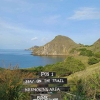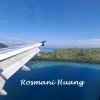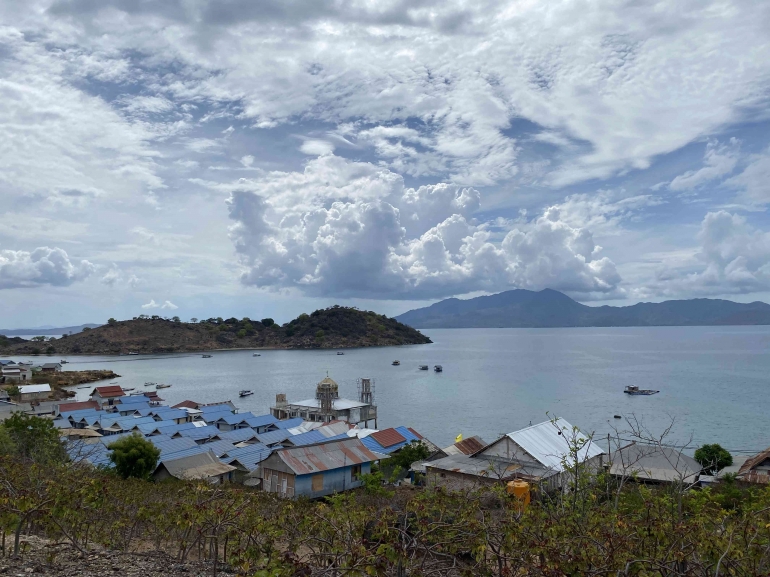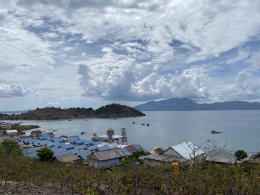Bajo Pulau Island is part of the Sape district in the Bima regency of West Nusa Tenggara, approximately 45 km away from the Bima city center. Bajo Pulau holds the potential to become a great tourist destination, boasting beautiful beaches such as Pink Beach, with its clean, white sand perfect for leisure activities. Not far from this area is the Kalimaya Dive Resort, which offers private diving opportunities. The easiest way to reach Bajo Pulau from Bima, West Nusa Tenggara, is through Sape Port. Based on this description, we can conclude that this island has the potential for tourism industry development.
In terms of local communities, the Bajo people consist of three ethnic groups, those are Bajo, Mbojo, and Bugis. The Bugis ethnic group originally hails from South Sulawesi, migrating to the island hundreds of years ago and subsequently settling in the coastal regions. The majority of people in this area make a living as fishermen and farmers who live in highland areas. Unfortunately, the region lacks 24-hour electricity access. Currently, electricity is supplied by a diesel power generation plant with a total capacity of around 618 kW, while the net electric power supply capacity is approximately 225 kW. This power plant operates exclusively at night, running for 12 hours from 18:00 to 06:00 WITA. The island is home to 395 PLN customers, with power capacity ranging mostly between 450 VA to 900 VA.
The fishermen in this area have expressed their intention to develop their economic potential. They aim to preserve their catches in temperature-controlled storage to prevent spoilage and maintain the freshness of the fish. Consequently, there is a need for increased electricity capacity and uninterrupted access, 24 hours a day, 7 days a week. In response to these requirements, the government has set strategies to enhance electricity supply, ensuring round-the-clock availability through grid extension. Not far from this area, an existing system called System Tambora currently covers the demand in Bima. However, Bajo Pulo is an isolated area separated from Bima. Therefore, Grid Extension emerges as the optimal choice for electrifying these areas and connecting them to the existing grid. The grid extension at 20 kV is still in progress, but it's not always easy to finish these projects. Shortages of the necessary equipment for stringing work, lack of materials such as shortages of tower bolt materials and a shortage of competent engineers seem to be hindering the timely completion of the project.
In conclusion, Bajo Pulau Island in the Sape district of the Bima regency, West Nusa Tenggara, stands as a promising tourist destination with its stunning beaches and potential for tourism industry development. However, the local communities, primarily consisting of the Bajo, Mbojo, and Bugis ethnic groups, face challenges, particularly in terms of electricity access. The reliance on a diesel power generation plant with limited capacity and operating hours poses constraints on the economic activities of the residents, particularly the fishermen expressing their intent to enhance their economic potential.
Recognizing the need for progress, the government has strategized to improve electricity supply through grid extension, aiming to provide uninterrupted access and boost economic activities in the region. While the ongoing 20 kV grid extension project faces challenges such as material shortages and a lack of skilled engineers, the potential benefits for the local communities and the emerging tourism industry underscore the importance of overcoming these obstacles.











